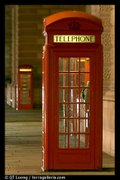 On Thursday, May 31, 2007 there is going to be Blue Moon!
On Thursday, May 31, 2007 there is going to be Blue Moon!But what is a Blue Moon?
This one is surprisingly tough to answer, because of a recent redefinition of when there is a
blue moon.
The word month originally stems from "moonth" or one rotation of the moon.
However, the lunar cycle is shorter than the modern solar calendar of months, so occasionally a year will have thirteen full moons in it instead of twelve.
The extra moon is the "Blue Moon".
So which one is the spare? For the last 50 years we have taken a blue moon to mean the second full moon in the same month. However, in the May 1999 edition of Sky and Telescope Magazine, this definition was identified to have been a mistake, made by them in 1946.
The original Farmer's Almanac definition of a blue moon was when a season had four full moons instead of three. Secondly (and this is the really strange part) the third full moon of the four was the one considered the extra one and not the fourth.
Finally, the year itself was counted from Yule to Yule (December 25th to December 25th) and not from January 1st to January 1st.
So, after all this, the Farmer's Almanac definition of a blue moon is: the third full moon in a season which has four when counting from December 25th to December 25th (whew!).












































No comments:
Post a Comment